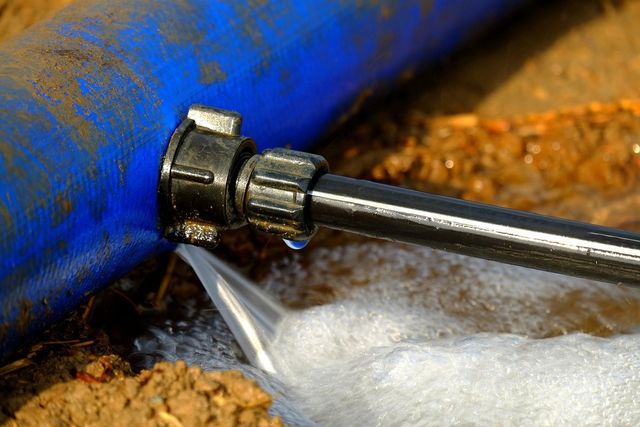6 Ways to Find Surprise Water Leaks in Your House
6 Ways to Find Surprise Water Leaks in Your House
Blog Article
How do you actually feel in regards to Hacks to detect leaks?

Early detection of leaking water lines can alleviate a possible catastrophe. Some little water leaks may not be visible.
1. Examine the Water Meter
Every house has a water meter. Checking it is a surefire way that helps you uncover leakages. For starters, shut off all the water resources. Make sure nobody will purge, make use of the tap, shower, run the washing machine or dish washer. From there, go to the meter and watch if it will certainly transform. Because no person is utilizing it, there need to be no movements. If it relocates, that indicates a fast-moving leakage. If you find no changes, wait a hr or two as well as check back once more. This implies you might have a slow leak that might also be below ground.
2. Inspect Water Intake
Examine your water expenses and track your water usage. As the one paying it, you need to discover if there are any type of inconsistencies. If you identify sudden changes, despite your consumption being the same, it suggests that you have leaks in your plumbing system. Remember, your water expense ought to fall under the exact same range on a monthly basis. A sudden spike in your bill suggests a fast-moving leak.
A stable rise every month, also with the very same practices, reveals you have a slow leakage that's additionally slowly rising. Call a plumber to completely inspect your residential property, particularly if you feel a warm location on your floor with piping underneath.
3. Do a Food Coloring Examination
When it pertains to water consumption, 30% comes from bathrooms. Examination to see if they are running correctly. Decrease specks of food shade in the storage tank as well as wait 10 minutes. If the shade in some way infiltrates your dish during that time without flushing, there's a leakage in between the storage tank and also dish.
4. Asses Outside Lines
Don't forget to check your outside water lines also. Test faucets by connecting a garden pipe. Should water permeate out of the connection, you have a loosened rubber gasket. Change this and make sure all connections are limited. It will assist obtain it properly checked out and also preserved each year if you have actually obtained a lawn sprinkler system. One tiny leakage can waste lots of water and also surge your water expense.
5. Check and Assess the Scenario
Property owners need to make it a habit to inspect under the sink counters and even inside cabinets for any type of bad odor or mold development. These two warnings show a leakage so timely focus is called for. Doing regular evaluations, even bi-annually, can conserve you from a significant problem.
Examine for discolorations and weakening as the majority of home appliances and also pipelines have a life expectations. If you think dripping water lines in your plumbing system, don't wait for it to rise.
Early discovery of leaking water lines can mitigate a prospective disaster. Some small water leaks may not be visible. Examining it is a proven way that aids you find leakages. One tiny leakage can waste lots of water and also spike your water costs.
If you suspect leaking water lines in your plumbing system, do not wait for it to escalate.
How to Know If Your Home Has a Hidden Leak
Water Meter Reveals Inexplicable Water Usage
If you’d like to test whether or not there’s a leak somewhere in your home, you can do this using your water meter. Here is how to conduct the test:
Don’t use any water in your home for at least 30 minutes; this also means not turning on faucets or water-using appliances.
Go outside, and check your water meter for activity.
If your water meter shows that there was activity, even though no one was using any water, this proves that there is a leak in your home.Visible Mold or Mildew Growth
Leaks behind walls create moist, dark environments that allow mold and mildew to grow and thrive. Eventually, you might see mold growth forming on the wall closest to a hidden leak.
If mold is growing in an area that receives a high amount of moisture, such as a bathroom, it may simply be an indication that better ventilation is needed. However, if you see mold growth on a wall or the ceiling in an area where you would not expect, you probably have a hidden leak.
Musty, Mildew Odor
Sometimes you might not be able to see the mold or mildew that is growing as a result of a leak. However, the smell can give the problem away just as easily. If you catch a whiff of something musty, there’s a good chance that old water is collecting somewhere in your home that you can’t see.
Stained/Warped Walls, Ceilings, or Floors
When your home soaks up water, a variety of red flags can become visible, including ceiling stains, bubbling drywall, warped walls, and sagging floors. While these issues can be caused by excess humidity, they can also be signs that a pipe or plumbing connection has started leaking behind your walls.
Inexplicably High Water Bill
After a while, you get a general sense for what your water bill should be. If you own a pool or sprinkler system, your bill will tend to be higher during summer. However, if you receive a water bill that seems especially high, and you can’t figure out what caused it, then you may have a hidden leak somewhere that’s increasing your bill.
https://www.plumbingjoint.com/blog/2019/july/how-to-know-if-your-home-has-a-hidden-leak/

We hope you liked our piece on Leaking water lines. Thanks a ton for taking the time to browse our posting. Sharing is caring. Helping people is fun. I thank you for reading our article about Finding hidden leaks.
Report this page